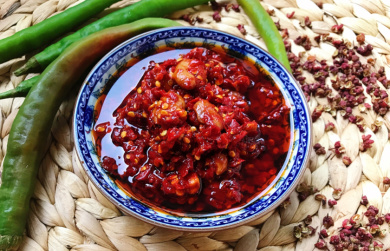Master the art of cooking heartwarming, umami-filled Chinese food
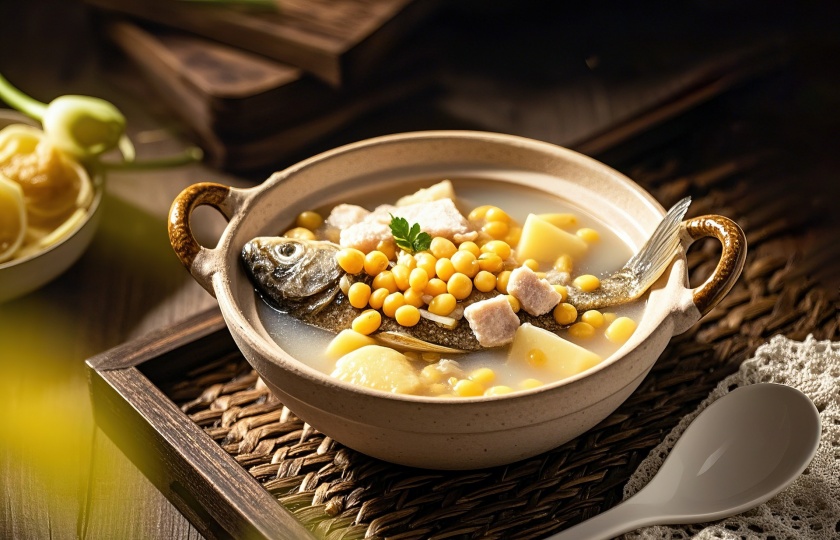
When it comes to Chinese cuisine, many people immediately think of Sichuan or Hunan food. However, there are many other Chinese dishes that are full of fresh, rich flavors. Recently, I made a delicious dish that even had my neighbors asking for the secret! Today, I’ll share the secrets of how to cook flavorful Chinese dishes with you.
How cooke heart umami chinese food?
Choose Fresh Ingredients
Seafood: Choose fresh shrimp, crab, shellfish, etc. These ingredients naturally carry the sweetness of the sea. For example, when making steamed fish, select fresh bass, clean it, and use ginger, garlic, and cooking wine to eliminate any fishy taste. The result will be a fish full of fresh flavor.
Meat: Fresh chicken, pork ribs, etc., offer tender, juicy meat. For a dish like pork rib and corn soup, use fresh ribs along with sweet corn and carrots. Slow-cooking will yield a rich, flavorful broth.
Vegetables: Mushrooms, wood ear fungus, bamboo shoots, and other seasonal vegetables can add unique flavors. A dish like mushrooms and greens highlights the deep umami of the mushrooms, making the greens even tastier.
Use High-Quality Seasonings
The key seasonings I use most in Chinese cooking are soy sauce, oyster sauce, and peanut butter. These seasonings not only enhance the freshness of the dish but also add depth and complexity. For example, oyster sauce brings a rich umami flavor, while soy sauce adds a darker, deeper taste.
Make Use of Fresh Aromatics
Fresh ingredients like scallions, garlic, ginger, star anise, and cilantro inject a powerful fragrance into dishes. Stir-frying these aromatics in a hot pan releases their essence, which becomes a key source of umami.
Use Broth and Meat Pairings
Another crucial element is making broth. Broths made from chicken bones, beef bones, or pork bones serve as a flavorful base for dishes. For example, when making braised pork, I’ll first simmer a rich pork bone broth. This savory stock ensures the flavor penetrates the dish.
Master Cooking Temperatures
Controlling the cooking temperature is essential for a flavorful dish. When stir-frying, I prefer to cook on medium or low heat to let the flavors meld slowly, rather than rushing and losing that depth of taste.
Balance Seasonings
When cooking, it’s important to balance flavors—freshness, saltiness, sourness, and sweetness. For example, when making sour and spicy dishes, I start by adding sugar to balance the acidity, then vinegar for layers of flavor, and finally, salt and soy sauce to enrich the taste.
What gives Chinese food its distinctive taste?
Variety of Ingredients
China is vast, with a rich variety of ingredients. From fresh seafood along the coast to wild game in the mountains and the abundance of vegetables and grains from the plains, each ingredient brings its own unique flavor to Chinese dishes, providing a rich foundation for freshness.
Diverse Cooking Techniques
Chinese cooking employs a wide range of techniques, including stir-frying, braising, steaming, boiling, frying, and roasting. Each method imparts a different texture and taste, allowing the cook to either preserve the natural flavor of the ingredients or create new, unique flavors. For example, braised pork becomes richer and more concentrated through slow simmering, while steaming preserves the ingredient's fresh taste, simple yet delicious.
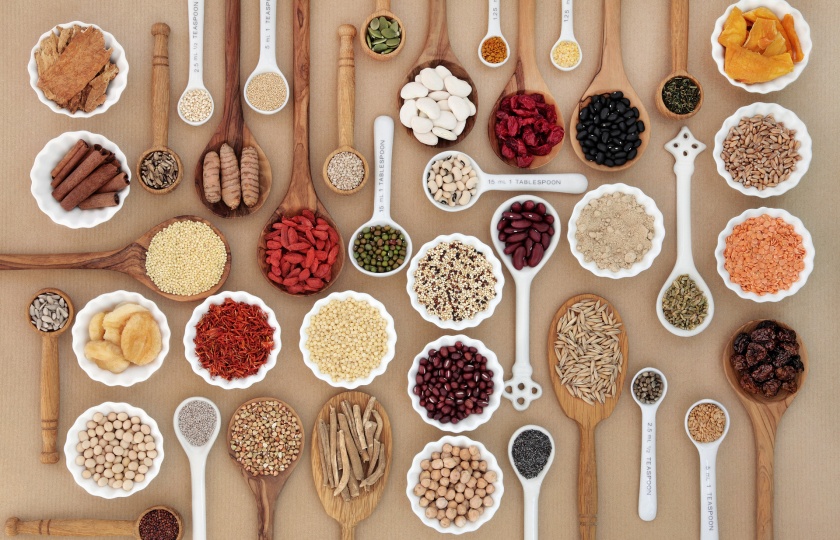
Clever Use of Seasonings
Seasonings play a crucial role in Chinese cuisine. From common ingredients like salt, sugar, soy sauce, and vinegar to regional specialties like doubanjiang (fermented bean paste), chopped chili, and fermented tofu, each seasoning brings its own distinctive flavor. Additionally, Chinese cooks are skilled in using spices like Sichuan peppercorns, star anise, and five-spice powder. These spices add depth and complexity, as seen in Sichuan cuisine, where the combination of Sichuan peppercorns and chili creates the iconic "mala" (numbing and spicy) flavor.
Moreover, Chinese cuisine pays careful attention to the balance and proportion of seasonings to achieve the best taste. For example, the sweet and sour pairing in the dish "Yu Xiang Rou Si" (Fish-Flavored Shredded Pork) creates a unique sweet, sour, and mildly spicy flavor, while the "Song Shu Gui Yu" (Squirrel-Shaped Mandarin Fish) uses sugar and vinegar to balance the sweet and sour flavors, enhancing the fish's delicate texture.
The Philosophy of Balancing the Five Flavors
Chinese cuisine emphasizes the harmony of the five basic tastes—sour, sweet, bitter, spicy, and salty. This unique balance is a defining characteristic of Chinese dishes. Each dish strives to find the right balance among these flavors, enriching the taste and creating a more complex mouthfeel. For example, hot and sour soup balances sourness and spiciness, while braised pork uses a balance of sweetness and saltiness to highlight the essence of each flavor.
Cultural Influence of Different Regions
The diversity of Chinese cuisine also reflects the cultural and historical background of various regions. The flavors of dishes from different places showcase local culture and culinary habits. For example, the "mala" (spicy and numbing) flavors of Sichuan, the sweetness of Jiangsu cuisine, and the clean, fresh taste of Fujian cuisine all reflect the unique climate, geography, and historical influences of each region. These cultural layers contribute to the distinctive appeal of Chinese food.
Historical Tradition and Innovation
Chinese cuisine boasts a long history of development, constantly evolving and innovating over time. Many traditional dishes have been passed down through generations, preserving their unique preparation methods and flavors. Meanwhile, as times change, chefs continue to innovate, incorporating new ingredients, seasonings, and techniques into traditional dishes, creating even more delicious meals. For example, many restaurants now combine Western cooking methods and ingredients with Chinese dishes, creating fusion dishes with unique flavors.
What are the three main ingredients in Chinese food?
The following three ingredients are essential in almost every Chinese dish:
Rice and Noodles: The Core of Staple Foods
Rice and noodles are indispensable staples in Chinese cuisine, holding significant importance. From rice in the south to noodles and dumplings in the north, and oil-splashed noodles in Shaanxi, every region has its own unique rice and noodle-based dishes. These ingredients provide energy and serve as the foundation for many other dishes, carrying a wide range of flavors and textures. Rice is a daily staple for many Chinese families, while noodles, dumplings, and buns are often served on festive occasions.
Meat and Seafood: Rich Protein Sources
Protein is an essential component in Chinese cuisine, with pork, beef, lamb, chicken, and seafood being key sources. Pork, in particular, is very common in dishes such as red-braised pork, sweet and sour ribs, and twice-cooked pork, providing rich, deep flavors. Seafood, including fish, shrimp, and crab, is also very popular in coastal regions, offering fresh, tender textures and a variety of cooking methods.
Vegetables and Soy Products: Nutrient-Rich Sources
Due to China’s favorable geographical environment, a wide variety of vegetables are available year-round. Common vegetables such as spinach, eggplant, cucumber, tofu, and tofu skin are staples in Chinese cooking. Vegetables and soy products not only provide rich vitamins and minerals but also add diversity to the dish’s texture and taste. For example, tofu is an essential ingredient in Chinese cuisine, offering a light taste that can be enhanced with seasonings, creating various textures and flavors.
What is the main seasoning in Chinese food?
Chinese cuisine features a wide variety of seasonings, each playing a unique and indispensable role in cooking. Here are some of the most common seasonings you’ll encounter in everyday Chinese cooking:
Soy Sauce
Soy sauce is one of the most common seasonings in Chinese cuisine. It provides a savory umami flavor to dishes and gives food a rich color and sheen. Common types of soy sauce include light soy sauce (for seasoning) and dark soy sauce (for color). Light soy sauce has a milder flavor and is used mainly for seasoning, while dark soy sauce is thicker and darker, typically used to add color and a richer flavor to dishes.
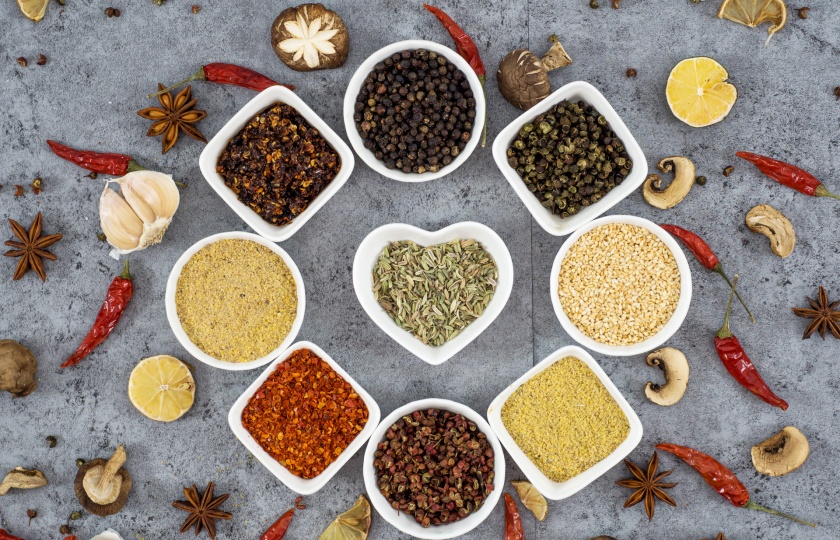
Oyster Sauce
Oyster sauce has a rich, savory taste and is primarily used to enhance the umami flavor in dishes. It is made from oyster extracts and has a unique, deep flavor that pairs well with seafood and meat. For example, adding oyster sauce to braised pork, stir-fried vegetables, or seafood dishes will deepen the overall flavor and add a layer of richness.
Cooking Wine
Cooking wine is mainly used to eliminate any undesirable odors in meat or seafood. It helps remove fishy smells while imparting a subtle aroma to the dish. When making braised dishes, fish soup, or steamed dishes, adding a bit of cooking wine will enhance the flavor.
Salt
Salt is the most basic seasoning. In Chinese cooking, salt is used not only for direct seasoning but also to enhance the natural flavors and textures of ingredients when paired with other seasonings. Different types of salt, such as sea salt and rock salt, are selected depending on the dish, and when paired correctly, they can bring out the original taste of the food.
Sugar
Sugar holds a special place in Chinese cuisine. It not only provides sweetness but also helps balance the flavor and enhance the umami in certain dishes. For example, adding sugar to dishes like braised pork or sweet and sour ribs creates a rounder, more complex flavor profile.
Vinegar
Vinegar plays a crucial role in Chinese cuisine by enhancing flavor, adding freshness, and cutting through greasiness. It is widely used in dishes from regions like Sichuan and Guangdong. Vinegar helps neutralize the oiliness of dishes and adds a refreshing tang to salads, stir-fries, and hot and sour soups, bringing an extra layer of flavor.
MSG and Chicken Powder
MSG and chicken powder are commonly used to intensify the umami in dishes, making them more flavorful. However, it’s important to use these seasonings in moderation to avoid overwhelming the dish or compromising health.
Five-Spice Powder and Sichuan Peppercorns
Five-spice powder is a blend of various spices with a rich, aromatic flavor, commonly used in braising, stewing, or stir-frying. Sichuan peppercorns, an essential seasoning in Sichuan cuisine, bring a numbing (麻) sensation to dishes, enhancing the unique experience of the flavors.
Garlic and Ginger
Garlic and ginger are essential in Chinese cuisine. They are not only used to remove odors but also to elevate flavors. Garlic is often used in stir-fries and salads, while ginger is commonly used when cooking meat or fish, removing any fishy smells and adding a fresh taste to the dish.
Doubanjiang (Fermented Bean Paste)
Doubanjiang is a key ingredient in Sichuan cuisine, made from fermented broad beans and chili peppers. It has a salty, spicy flavor and a unique aroma, making it essential for dishes like Mapo Tofu.
How chinese cook fish?
There are many ways to cook fish in Chinese cuisine, and each method brings out a different flavor and texture. Here are some common ways to prepare fish:
Steamed Fish
Steaming fish preserves its natural freshness and is a simple method. Take bass as an example: clean the fish, score both sides, and marinate with salt and cooking wine. Place ginger slices at the bottom of a plate, put the fish on top, and then add more ginger and green onions on top. Once the steamer is boiling, steam the fish for 8-10 minutes on high heat. After steaming, remove the fish, discard the ginger and onions, pour out the liquid (to reduce any fishy smell), and drizzle with steamed fish soy sauce. Garnish with chopped green onions and pour hot oil over it.
Braised Fish
Braised fish is a classic dish. After cleaning the fish, score it on both sides and marinate with cooking wine, salt, and other seasonings. Heat some oil in a pan, fry ginger and garlic until fragrant, and then add doubanjiang to release the red oil. Add the fish and pan-fry until golden brown on both sides. Add water, dark soy sauce, sugar, vinegar, and other seasonings, and simmer over low heat until the sauce thickens. Once finished, garnish with cilantro.
Sour Fish Soup (Sauerkraut Fish)
Sour fish soup is both spicy and sour, perfect with rice. Clean the grass carp, separate the fish meat from the bones, and slice the meat, marinating it with salt, cooking wine, starch, and egg whites. Heat oil in a pan, fry ginger and garlic until fragrant, then add pickled chili peppers and sauerkraut. Fry until aromatic. Add fish bones and fry until golden brown on both sides, then add boiling water and cook until the broth turns white. Remove the fish bones and sauerkraut, add the marinated fish slices, cook until done, and garnish with garlic, green onions, dried chilies, and Sichuan peppercorns. Pour hot oil over the dish.
Sweet and Sour Fish
Sweet and sour fish has a crispy exterior and a tender interior, with a perfect balance of sweet and sour. Take ribbonfish, clean it, and cut it into segments. Marinate with salt. Prepare the sweet and sour sauce by mixing cooking wine, soy sauce, sugar, vinegar, and salt. Coat the fish segments with dry starch and fry them in hot oil until golden brown on both sides. Add chopped ginger, garlic, and star anise to the pan, pour in the sweet and sour sauce, and simmer on low heat until the sauce thickens.
Boiled Fish (Water Boiled Fish)
Boiled fish has a strong numbing and spicy flavor, with tender fish meat. Clean the grass carp, slice the meat, and marinate with salt, cooking wine, starch, and egg whites. In a pot, boil some stock or water, add fish head and bones, and cook for 5 minutes. Remove and set aside. Add fish slices to the pot, cook until just done, and remove them. Place the fish slices on top of the bones. Add ginger, garlic, green onions, pepper, MSG, Sichuan peppercorns, and dried chilies. Finally, pour hot oil over the dish.
Grilled Fish
Grilled fish works well for fattier fish such as eel or mackerel. First, marinate the fish and then air-dry it. During grilling, pay attention to the heat to avoid burning. Squeeze some lemon juice on the fish before serving for extra flavor.
Stewed Fish
Stewed fish is ideal for fish with a natural fresh flavor, such as yellow eel, black fish, or crucian carp. When stewing, add some tofu to enhance the flavor and create a complementary amino acid profile. Stew the fish over low heat to allow the fish to absorb the flavors of the broth.
Fish Soup
Fish soup should be fresh and flavorful. Fish like mandarin fish or crucian carp are ideal for making soup. Before making the soup, it’s best to fry the fish in oil to prevent the skin from breaking. Adding white radish to the soup will enhance the flavor.
Pan-Fried Fish
Pan-fried fish is perfect for fish like ribbonfish or small yellow croaker. Before frying, rub a thin layer of salt on the fish and marinate for about 5 minutes for small fish and 10 minutes for larger fish. Heat the pan, wipe it with ginger to prevent sticking, then fry the fish in hot oil to avoid the skin breaking or peeling off.
The Eight Culinary Cuisine Traditions of China
Chinese cuisine is divided into eight major regional cuisines: Shandong (Lu), Sichuan (Chuan), Guangdong (Cantonese, Yue), Jiangsu (Su), Fujian (Min), Zhejiang (Zhe), Hunan (Xiang), and Anhui (Hui).
Characteristics and Signature Dishes
Shandong Cuisine (Lu): The oldest of the eight culinary traditions, characterized by salty and fresh flavors, emphasizing health and balance. Signature dishes include Sweet and Sour Carp, Scallion Braised Sea Cucumber, and Egg White Chicken Fillet.
Sichuan Cuisine (Chuan): Known for bold, spicy, and numbing flavors, with signature dishes like Kung Pao Chicken, Mapo Tofu, and Husband and Wife Lung Slices.
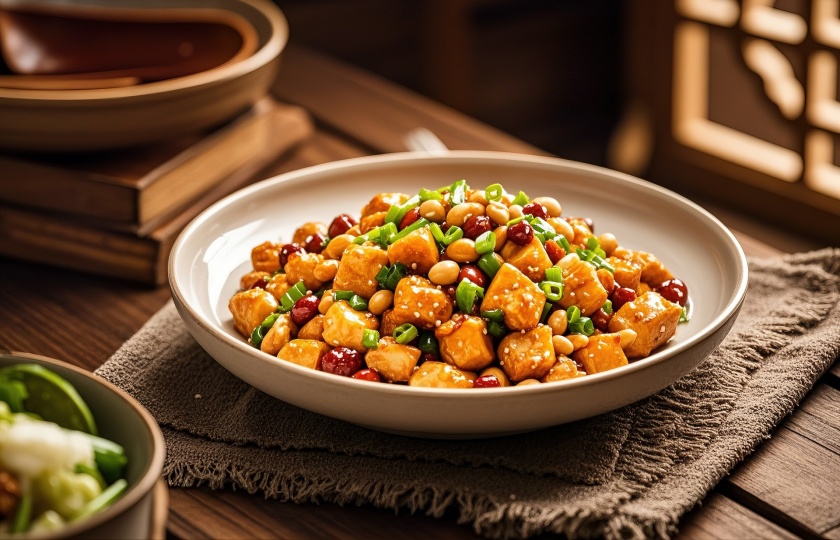
Guangdong Cuisine (Yue): Focuses on the quality and taste of ingredients, with a preference for light and fresh flavors. Signature dishes include White Cut Chicken, Roast Goose, and Suckling Pig.
Jiangsu Cuisine (Su): Known for its sweet flavors and delicate knife work. Signature dishes include Lion's Head Meatballs, Jinling Meatballs, and Stewed Chicken in Yellow Mud.
Fujian Cuisine (Min): Features light and fresh flavors, with signature dishes like Buddha Jumps Over the Wall and Chicken Soup with Sea Clams.
Zhejiang Cuisine (Zhe): Known for using tender, fresh ingredients. Signature dishes include Dragon Well Shrimp, West Lake Vinegar Fish, and Yellow Croaker with Sea Cucumber Soup.
Hunan Cuisine (Xiang): Characterized by its sour and spicy flavors. Signature dishes include Steamed Fish Head with Chili Sauce and Steamed Preserved Meats.
Anhui Cuisine (Hui): Known for its expertise in cooking mountain and freshwater delicacies. Signature dishes include Braised Wild Boar and Huangshan Stewed Pigeon.












